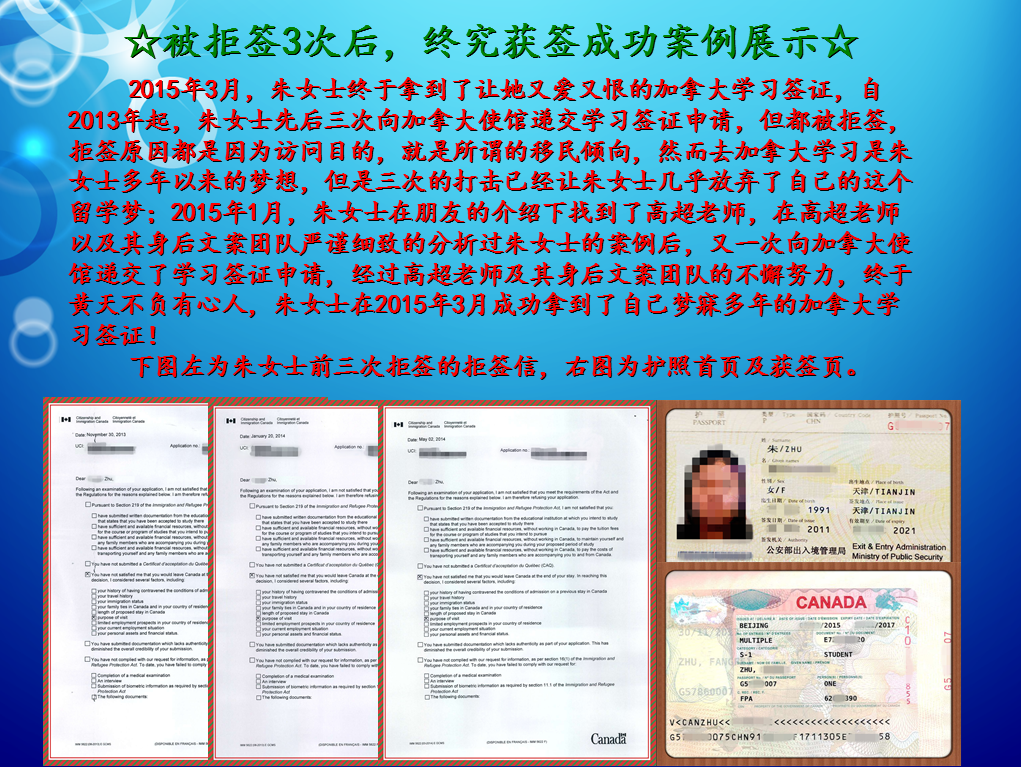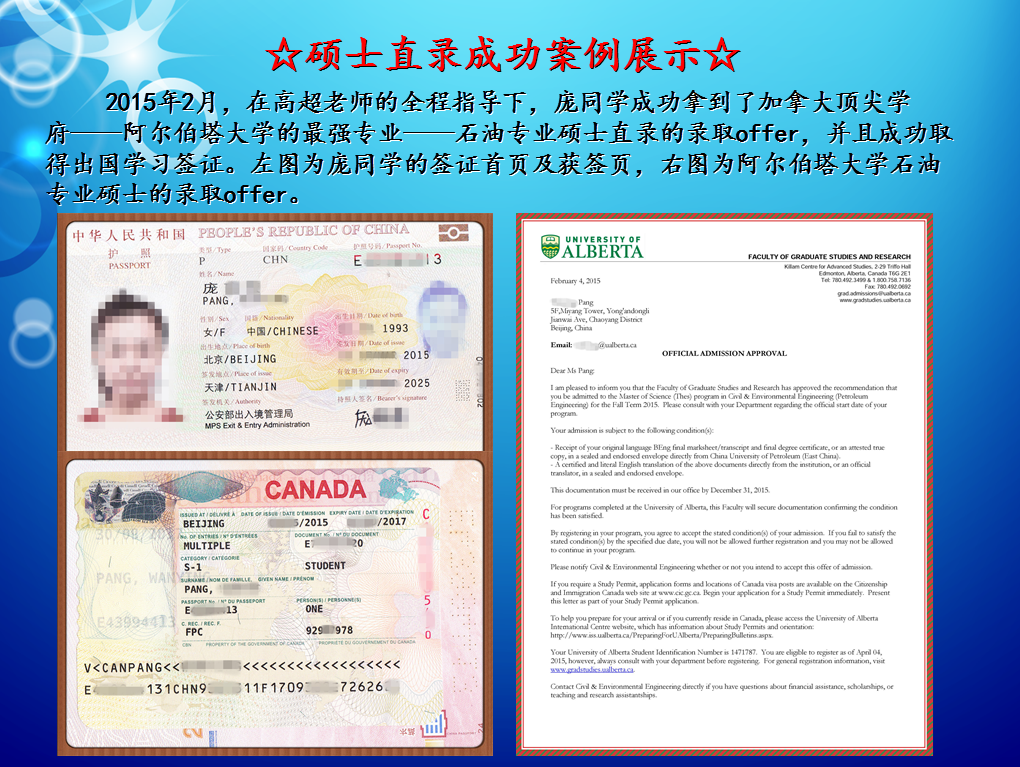【双语阅读】关于群体的思考.
2017-08-14 268阅读
为帮助广大考生更好地准备雅思、托福、SAT等考试,澳际留学特推出【英语学习】频道,涵盖基础英语、实用英语、娱乐英语等多项内容,在您通往成功的道路上做您最坚实的左膀右臂。
以下部分为【双语阅读】内容,本文介绍关于群体的思考,中文翻译部分见第二页。
在为人类的全体活动建立模型时,要将他们看作是"人",而不是"分子"。群体的行动有时候是不可知的,偶然致使的,不过有充分的理由相信,这种行为符合简单的规律。 简单说来,这就像液体中的分子,在群体中的人的行动大致是一样的。 在一个模型中捕获这些相似性可以对于一个群体的行动进行预测。
Science and Technolgy
Social science
Wisdom about crowds
To model the behaviour of humans en masse, treat them as people, not molecules
THE behaviour of crowds is sometimes unpredictable and occasionally deadly, but there is good reason to believe it is governed by simple rules. Presumably, like molecules in a liquid, people in a crowd all behave in more or less the same way. Capture those similarities in a model and it should be possible to predict how a crowd will behave.
Existing models of crowd behaviour do just that. They treat moving masses of humanity as though they were fluids. This works, up to a point. But it often fails to predict the changes that happen as a crowd&aposs density increases and its movement becomes chaotic. That is why Mehdi Moussaid of Paul Sabatier University, in Toulouse, and his colleagues have made a radical innovation. Instead of treating the individual human beings in a crowd as if they were molecules, they have treated them as if they were human beings. They have, in other words, given them volition. Of course, the objective of someone in a moving crowd is usually fairly simple-to get somewhere and then stay there. But it is an objective, nevertheless.
As they describe in the Proceedings of the National Academy of Sciences, Dr Moussaid and his team built a computer model in which, initially, every virtual person in the crowd followed two rules. The first was that each attempted to chart as straight as possible a path to his destination, such as an exit or the end of a corridor, while avoiding obstacles, including other pedestrians. Second, each adjusted his speed, depending on his distance from such obstacles.
These two rules were enough to reproduce in the model the sorts of behaviour seen in real crowds, such as the tendency people have to sort themselves spontaneously into separate lanes of traffic moving in opposite directions and the stop-and-go motion that occurs as crowds become more dense. When Dr Moussaid really put the pressure on, however, by increasing the density of the virtual crowd, the model did not show the extreme turbulence seen in real crowds-the sudden crushes and chaotic changes in direction.
These happen because in extremely dense crowds there is so much shoving and jostling that people&aposs movements are no longer entirely under their own control. In other words, they actually do start behaving like molecules in a fluid, bouncing off one another at random. To mimic that behaviour, Dr Moussaid added a third rule, which made members of his crowd more molecule-like when they were at very close quarters-a lack of volition that will be familiar to anyone who has been in a tight jam of humanity.
With this third rule added, the model accurately reproduced the dynamics of dense crowds as well as those of sparser ones. At first, a crowd flows smoothly. Then, as more people are added, it begins to show stop-and-go patterns and sometimes extreme crushing. Finally, it displays the sort of turbulence that can lead to disaster. On one run, for example, the model showed precisely the pattern seen in a video of a catastrophe in Mecca in 2006, when 346 pilgrims there on the haj were crushed to death.
The practical upshot of all this, Dr Moussaid hopes, will be improvements in the design of public spaces where crowds are likely to gather, especially in the location of evacuation routes. That is an outcome greatly to be desired. And it was made possible by remembering that people are not molecules.
【中文对照翻译】
科技
社会科学
关于群体的思考
在为人类的全体活动建立模型时,要将他们看作是"人",而不是"分子"。
群体的行动有时候是不可知的,偶然致使的,不过有充分的理由相信,这种行为符合简单的规律。 简单说来,这就像液体中的分子,在群体中的人的行动大致是一样的。 在一个模型中捕获这些相似性可以对于一个群体的行动进行预测。
现有的大众行动模型就可以做到这一点。 这些模型将变化的人类群体当作是液体。 在某种程度(或者条件)下,这个模型非常有效。 不过当涉及到群体的密度增加,运行变得混乱时,对于预测发生的变化往往不能奏效。 这就是保尔?萨巴蒂大学(Paul Sabatier University,在图卢兹)的迈赫迪?穆赛德(Mehdi Moussaid)和他的同事已经进行突破性创新的原因。 与以往的理论中将群体看作是分子不同,他们将群体看作是"人"。 换句话说,就是考虑到了"人的意志"。 当然了,在一个活动的群体中的客观存在的一些人通常比较简单:到哪里,就待在那。 即使这样,它还是一个客观存在的事物。
就像他们在《美国国家科学院学报》中所描述的那样,穆赛德博士和他的团队建立了一个计算机模型,在这个模型里,起先,每个虚拟的在群体中的人都服从两个规律。 第一,当避开包括其他行人在内的障碍时,每个人都试图尽量以直线的的路线到达目的地,就像一个出口或一个走廊的尽头。 第二,每个人都会调整自己的速度,这个依赖于与障碍物的距离。
这两个规则在真实的群体中的各种行为上已经得到了足够的验证,例如,在公路上,人们通常会趋向于同时将自己朝相反的方向移动,这种停停走走的行为,让本来发生的拥挤更加拥挤。 当穆赛德博士确实增加压力时——通过增加虚拟人群的密度,在真实的人群中,这个模型并没有显示出的骚乱——骤然的碾压和方向变化的混乱。
因为在极其密集的人群里,有很多人推搡和拥挤,人们自身的行动并不受自己的控制,因此会发生混乱。 换句话说,这个时候,他们就像液体中的分子一样,被任意地反弹。 为了模拟这种行为,穆赛德博士又增加了第三条规律,即当群体中的成员之间非常接近的时候,他们就像分子一样,此时群体中的成员是缺乏意志的,对那些处于拥挤人群里的人来说,这种感觉深有体会。
有了这第三条规律的补充,无论在动态密集的人群里还是在稀疏的人群里,这种模型都会精确在得到再现。 最初,人群流动顺畅。 接着,更多的人加入,整个人群开始变成时走时停的模型,有时候还变得极度拥挤。 最后,人群变得混乱,并能导致灾难。 例如,在2006年麦加的朝觐的灾难上,根据视频的显示内容,这种模型得到了精确的显示,当时有346名朝圣者在混乱中被踩踏至死。
穆赛德博士希望,所以有这种真实的结果会对有助于改善公共场所的设计,尤其是对于疏散通道位置的考虑,在这种场合下,有可能聚集大量的人。 这是一个非常值得注意的结果。 一定要牢记,人,不是分子。
【双语阅读】关于群体的思考 中文翻译部分为帮助广大考生更好地准备雅思、托福、SAT等考试,澳际留学特推出【英语学习】频道,涵盖基础英语、实用英语、娱乐英语等多项内容,在您通往成功的道路上做您最坚实的左膀右臂。
以下部分为【双语阅读】内容,本文介绍关于群体的思考,中文翻译部分见第二页。
在为人类的全体活动建立模型时,要将他们看作是"人",而不是"分子"。群体的行动有时候是不可知的,偶然致使的,不过有充分的理由相信,这种行为符合简单的规律。 简单说来,这就像液体中的分子,在群体中的人的行动大致是一样的。 在一个模型中捕获这些相似性可以对于一个群体的行动进行预测。
Science and Technolgy
Social science
Wisdom about crowds
To model the behaviour of humans en masse, treat them as people, not molecules
THE behaviour of crowds is sometimes unpredictable and occasionally deadly, but there is good reason to believe it is governed by simple rules. Presumably, like molecules in a liquid, people in a crowd all behave in more or less the same way. Capture those similarities in a model and it should be possible to predict how a crowd will behave.
Existing models of crowd behaviour do just that. They treat moving masses of humanity as though they were fluids. This works, up to a point. But it often fails to predict the changes that happen as a crowd&aposs density increases and its movement becomes chaotic. That is why Mehdi Moussaid of Paul Sabatier University, in Toulouse, and his colleagues have made a radical innovation. Instead of treating the individual human beings in a crowd as if they were molecules, they have treated them as if they were human beings. They have, in other words, given them volition. Of course, the objective of someone in a moving crowd is usually fairly simple-to get somewhere and then stay there. But it is an objective, nevertheless.
As they describe in the Proceedings of the National Academy of Sciences, Dr Moussaid and his team built a computer model in which, initially, every virtual person in the crowd followed two rules. The first was that each attempted to chart as straight as possible a path to his destination, such as an exit or the end of a corridor, while avoiding obstacles, including other pedestrians. Second, each adjusted his speed, depending on his distance from such obstacles.
These two rules were enough to reproduce in the model the sorts of behaviour seen in real crowds, such as the tendency people have to sort themselves spontaneously into separate lanes of traffic moving in opposite directions and the stop-and-go motion that occurs as crowds become more dense. When Dr Moussaid really put the pressure on, however, by increasing the density of the virtual crowd, the model did not show the extreme turbulence seen in real crowds-the sudden crushes and chaotic changes in direction.
These happen because in extremely dense crowds there is so much shoving and jostling that people&aposs movements are no longer entirely under their own control. In other words, they actually do start behaving like molecules in a fluid, bouncing off one another at random. To mimic that behaviour, Dr Moussaid added a third rule, which made members of his crowd more molecule-like when they were at very close quarters-a lack of volition that will be familiar to anyone who has been in a tight jam of humanity.
With this third rule added, the model accurately reproduced the dynamics of dense crowds as well as those of sparser ones. At first, a crowd flows smoothly. Then, as more people are added, it begins to show stop-and-go patterns and sometimes extreme crushing. Finally, it displays the sort of turbulence that can lead to disaster. On one run, for example, the model showed precisely the pattern seen in a video of a catastrophe in Mecca in 2006, when 346 pilgrims there on the haj were crushed to death.
The practical upshot of all this, Dr Moussaid hopes, will be improvements in the design of public spaces where crowds are likely to gather, especially in the location of evacuation routes. That is an outcome greatly to be desired. And it was made possible by remembering that people are not molecules.
上12下
共2页
阅读全文留学咨询
更多出国留学最新动态,敬请关注澳际教育手机端网站,并可拨打咨询热线:400-601-0022
留学热搜
相关推荐
- 专家推荐
- 成功案例
- 博文推荐

Copyright 2000 - 2020 北京澳际教育咨询有限公司
www.aoji.cn All Rights Reserved | 京ICP证050284号
总部地址:北京市东城区 灯市口大街33号 国中商业大厦2-3层









高国强 向我咨询
行业年龄 12年
成功案例 3204人
留学关乎到一个家庭的期望以及一个学生的未来,作为一名留学规划导师,我一直坚信最基本且最重要的品质是认真负责的态度。基于对学生和家长认真负责的原则,结合丰富的申请经验,更有效地帮助学生清晰未来发展方向,顺利进入理想院校。
Amy GUO 向我咨询
行业年龄 17年
成功案例 4539人
一切的一切从现在开始.用自己的态度闯出一片天
薛占秋 向我咨询
行业年龄 11年
成功案例 1869人
从业3年来成功协助数百同学拿到英、美、加、澳等各国学习签证,递签成功率90%以上,大大超过同业平均水平。
Tara 向我咨询
行业年龄 7年
成功案例 1869人